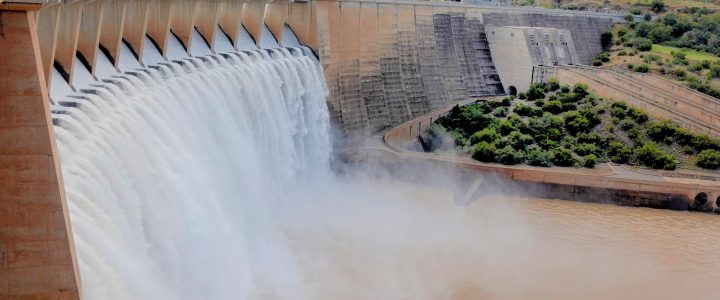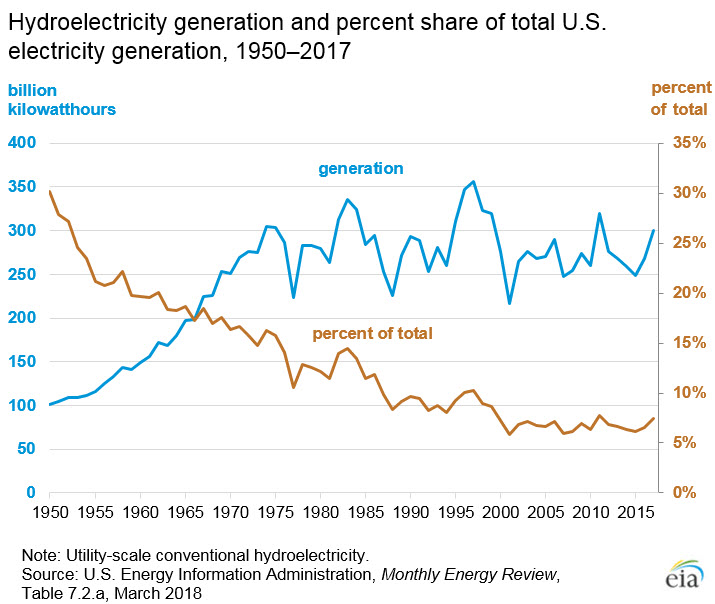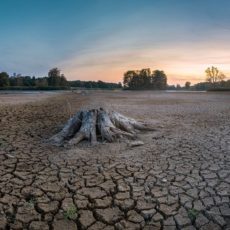
Recently, we’ve talked about the sun, the wind, and even fossil fuels as renewable sources of energy.
Today, we’re talking about water.
Hydropower
Humans have been harnessing the power of water, or hydropower, through water wheels and turbines for centuries – dating all the way back to the Ancient Greeks, Chinese, Romans and Asian Indians who used water power to pound grains and power irrigation systems.
Part of the beauty of hydropower is in its simplicity. Falling water is channeled through water turbines. The pressure of the water causes the turbine blades to rotate a shaft to drive an electrical generator, converting the motion into electrical energy. Because the water cycle is an endless, constantly recharging system, hydropower is considered a renewable energy source.
You might be wondering… can something so simple actually be scaled to harness a meaningful amount of energy for use? The answer is yes, absolutely, and it’s already happening around the world. The Hoover Dam in the Western United States is just one example, and it provides 4 billion kilowatt hours of power each year, which serves 1.3 million people across Nevada, Arizona and California.
So, how does a dam fit in?
A dam is a large, man-made structure built to contain a body of water. Once a dam is built, an artificial man-made lake is created behind the dam. Hydroelectric power is produced as water passes through and into a river below. The more water that passes through a dam, the more energy is produced. Dams allow for controlled production of the renewable energy from water. Dams also control water flow to regulate flooding and divert water for irrigation in different areas as needed.
Did you know that every state in America has hydropower facilities? Hydroelectric power is considered a domestic source of energy, allowing each state to produce their own energy without being reliant on international fuel sources.
In 1940, hydropower accounted for 40% of electrical generation in the United States. However, today, that number has dwindled to 7.5%.

Given the simplicity of the way water can be used to produce electricity, why aren’t we seeing a push for more of it?
Environmental Considerations
There are, in fact, more hydroelectric projects in the works – as many as 3,700 in the developing world.
But unfortunately, building hydroelectric dams is not a cut and dried, black and white, simple solution for providing renewable energy — despite being a clean energy source that doesn’t create air pollution like coal or natural gas production and use.
According to recent studies, more than 90% of dams built since the 1930s were more expensive than anticipated. They have damaged river ecology, forests and biodiversity; displaced millions of people while disrupting food systems, water quality and agriculture; and released greenhouse gases from the decomposition of flooded lands and forests.
Additionally, the power generated often doesn’t even go to the places bearing these ecological burdens.
There’s also the increasing threat of catastrophic dam failure from older, degraded facilities. When a dam fails, or bursts, there is a sudden release of massive amounts of water which can cause extreme loss of lives, both animal and human, and damage to surrounding areas. According to the AP, more than 1600 dams in the US alone have been identified as posing a potential risk.
Dam it… or not?
So, how do we balance this damage vs the rewards of renewable energy?
One solution is rather than building new projects, instead, focusing on renovating already existing hydroelectric dams. There is an estimated 12,000 megawatts of electrical potential sitting in dams which simply do not have hydroelectricity generators.
Sites like the Bonneville Dam on the Columbia River have added fish ladders, and the Safe Harbor Dam on the Susquehanna River has elevators to ensure that migrating fish, like salmon and shad, can travel without becoming trapped up by the dam.
Currently, there are more than 57,000 large dams in existence worldwide for drinking water, flood control, hydropower, irrigation, navigation, and water storage. How many of these can be upgraded for efficiency and environmental sustainability? And if not, how many can (and should) be decommissioned and returned to the natural state of the local ecology?
Additionally, new projects need to be held to rigorous standards of transparency and accountability. The costs to humans and wildlife must be made truly transparent before construction decisions are implemented and damage is done.



